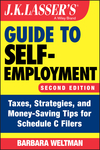Tips on Paying Taxes (and Getting Refunds)
When all is said and done, the bottom line on the return shows whether you owe taxes or are entitled to receive a refund. If you owe money, you may need some help; if you’re owed money, you’ll want to receive it as fast as you can or have it applied on your behalf according to your directions. Here are some strategies to help you achieve your goal.
Payment Options
If you owe money to the federal government, there are three payment options:
- Check. A check made payable to the U.S. Treasury. Personal checks, bank checks, and money orders are acceptable; cash is not. Include Form 1040-V, Payment Voucher, along with your return and check but don’t attach them to the return.
- Charge. Charge the payment to a major credit card through IRS-approved processors, Official Payments Corporations (www.officialpayments.com) or Link2Gov Corporation (www.PAY1040.com). You’ll pay 2.49% of your tax payment to the processor (called a “convenience fee”); the IRS does not impose a fee for charging your taxes to a credit card. You can also use a debit card.
- Electronic transfer. Transfer funds electronically from your bank account to the U.S. Treasury using EFTPS (www.eftps.gov). Once you register at EFTPS, you can make payments through your computer or by telephone. The federal government doesn’t charge for this service, but your bank might.
Delayed Payments
Despite the array of payment options, you may not have the ability to satisfy your tax bill when your return is due. Don’t let this delay your filing. Getting your return in on time (by April 15 or the extended due date if you asked for an extension to October 15) will avoid late filing penalties. Obtaining a filing extension does not give you more time to make tax payments without incurring interest and possible penalties.
If you can’t pay some or all of the tax bill shown on your return, you still have options to avoid late payment penalties and minimize interest on underpayments.
- Request an installment agreement. Attach Form 9465, Installment Agreement Request, to the return or apply online at www.irs.gov using the pull-down menu option under “I need to…” and select “Set Up a Payment Plan.” If the amount owed is under $10,000 and you’ve paid taxes on time in previous years, you’re automatically entitled to an installment plan running up to three years. Usually, you’ll receive a response within 30 days (longer if you file the return after March 31). There’s a fee for using an installment agreement, which is built into the payment plan.
- Make an offer in compromise. If your financial circumstances are dire and you believe you may be unable to pay the full bill, no matter how much time you have to do so, you can offer to pay a portion of the bill. File Form 656, Offer in Compromise, as well as Form 433-A, to provide financial disclosure. The application fee of $150 must be included with the form.
Refund Options
If the taxes you’ve paid are greater than your tax bill, you’re owed a refund. You have a choice:
- Receive a refund. If you do nothing, the government will send a check payable to you. If you want to receive your money quicker, use the direct deposit option. Complete your bank account information on the return so the government can deposit your refund into it.
- Apply some or all of it toward next year’s estimated taxes. You simply enter the amount of the refund you want to be applied toward 2009 estimated taxes. Once you make this choice, you can’t change your mind and get your money back.
- Send the refund to certain accounts. You can have your refund deposited directly into a traditional individual retirement account (IRA), a Roth IRA, a simplified employee pension (SEP) IRA, a health savings account (HSA), or a Coverdell education savings account (ESA). Be sure to notify your plan custodian or trustee if you want the deposit to be credited to 2008 contributions. Without notification, the refund will be credited toward 2009 contributions. If you want to split your refund into two or more accounts, file Form 8888, Direct Deposit of Refund into More than One Account.
Looking Ahead
If you obtained a large tax refund, you may want to revisit your withholding and estimated tax payments. The refund represents an interest-free loan you’ve made to the government. By adjusting your tax payments throughout the year, you’ll have the use of your money sooner.
If you owed a large tax bill, you too may need to adjust withholding and estimated tax payments to avoid the need to come up with a large payment at tax time as well as to avoid estimated tax penalties, if applicable.
Original issue discount (OID)
The difference between the face value of a bond and its original issue price. OID is reported on an annual basis as interest income.



